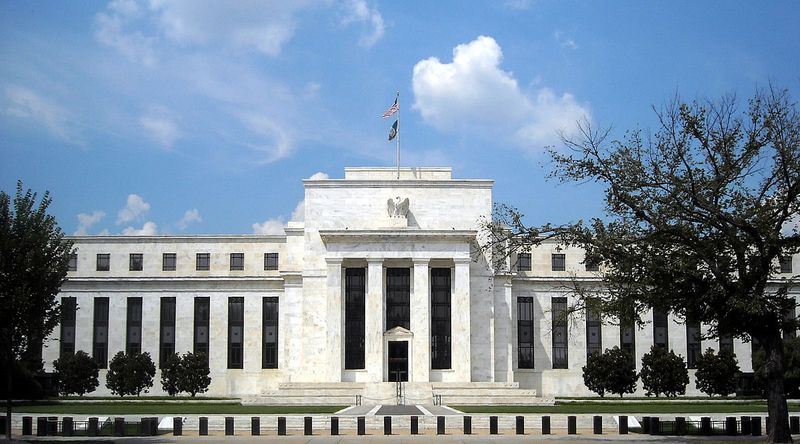New Cryptocurrency to Mimic Algorithmic Central Bank

On January 6 the price of one bitcoin hovered above US$17,000. One month later, it sunk to $7,700—a 45 percent drop.
Imagine signing a bitcoin-denominated job contract at the beginning of the year, or selling a car in bitcoin installments. The fact that no sane person does the above and instead uses paid services such as BitPay, which instantly converts bitcoins to fiat, underscores the volatility risk associated with most cryptocurrencies.
Bitcoin has become more volatile not less over the past two years. My colleague Max Gulker has also documented that four altcoins he examined—bitcoin cash, ethereum, litecoin, and ripple—are even more volatile than bitcoin.
An economist whose work I admire, Lawrence White of George Mason University (a former AIER summer fellow), has alluded to the fact that fixed or “pre-programmed” money supplies exacerbate volatility. The question then, is how to generate a flexible supply and more stability in the private market. This is where the basis cryptocurrency steps in, although it is far from alone in its mission.
Basis, a relatively new player in the crypto space, seeks to bring sufficient price stability to make those kinds of long-term contracts and credit operations a reality. Formerly known as basecoin, this one-year-old startup based in New Jersey has secured $133 million from some of Silicon Valley’s top venture capitalists and even the advisory of prominent economist John Taylor of Stanford University (the namesake of the Taylor Rule).
Basis is one among several stablecoins, cryptocurrencies that offer the opposite of the price volatility that is hindering mass adoption and the formation of debt and capital markets. There are basically three kinds of stablecoins: fiat-collateralized, crypto-collateralized, and non-collateralized. Fiat-collateralized stablecoins (e.g. tether and trueUSD) back their value with physical US dollars; crypto-collateralized ones such as dai resort to another cryptocurrency or basket of cryptocurrencies; and non-collateralized ones do without backing altogether.
Basis falls under the last category, although it has yet to launch.
In that sense, basis, like fiat currencies after the end of the gold standard, will not be redeemable for anything. The startup’s white paper claims it can peg the value of each basis to one US dollar or another currency or any arbitrary asset “while remaining completely decentralized.” Its main goal is maintaining whatever that peg may be.
For instance, if 1 basis = 1 US dollar, the protocol will ensure this pre-defined exchange rate by contracting or expanding the money supply. If basis becomes too valuable, the blockchain will create and push new tokens into the economy; if the value begins to drop, it will take tokens out of circulation by auctioning bonds. Not having a fixed amount of tokens is a key difference with bitcoin and many other cryptocurrencies.
If the former sounds like what the Federal Reserve does, that’s because it is similar to what basis aims to achieve, but in a transparent, non-discretionary manner. Relying on the Chicago school’s Quantity Theory of Money, its creators seek to set up an “algorithmic central bank”—that is, a set of rules to adjust the money supply without human intervention.
There are many advantages to a stable cryptocurrency. Financial contracts that involve payments over time become much less risky. Employers can hire anyone across the world without worrying about overpaying or underpaying him by the end of the month. Traders can use it to convert their funds while they wait out turbulence in cryptocurrency markets. Merchants don’t need to pay extra fees to third-party conversion services. In countries with highly devalued currencies, such as Egypt, Venezuela, or Argentina, it can become more attractive than hard-to-come-by US dollars or even bitcoin.
But if it were that easy, a stablecoin would have already conquered the market, and no one has yet. As analysts have pointed out, scalability is a major problem. There is no point in touting digital cash without first solving how to manage millions of transactions quickly and cheaply.
Decentralization is basis’s hardest selling point. Although the white paper claims that “unlike the Fed, basis would implement its monetary policy using a transparent, decentralized algorithm, with no direct human input,” it also leaves the door open to transition the peg from US dollars “to a consumer price index (CPI) or basket of goods.” Who will decide and implement that fundamental change to the algorithm? And if indeed “basis were to command a significant share of the world’s transaction volume,” how can it ensure independence from governments or malicious actors with a backdoor in place?
Make no mistake, basis could be a major milestone and even benefit other cryptocurrencies. There is evidence that bitcoin will remain like gold, an investment opportunity and occasional payment method, but too cumbersome for regular transactions. If basis succeeds, it will relieve the pressure on bitcoin to drift away from its original libertarian philosophy and become like cash, which has already led to a major split.
Many privacy-minded crypto users, however, will probably look at it with curiosity and take a wait-and-see approach from a safe distance. The crypto world can benefit from what amount to private central banks—if they can remain private and decentralized.
Daniel Duarte contributed to this article.










